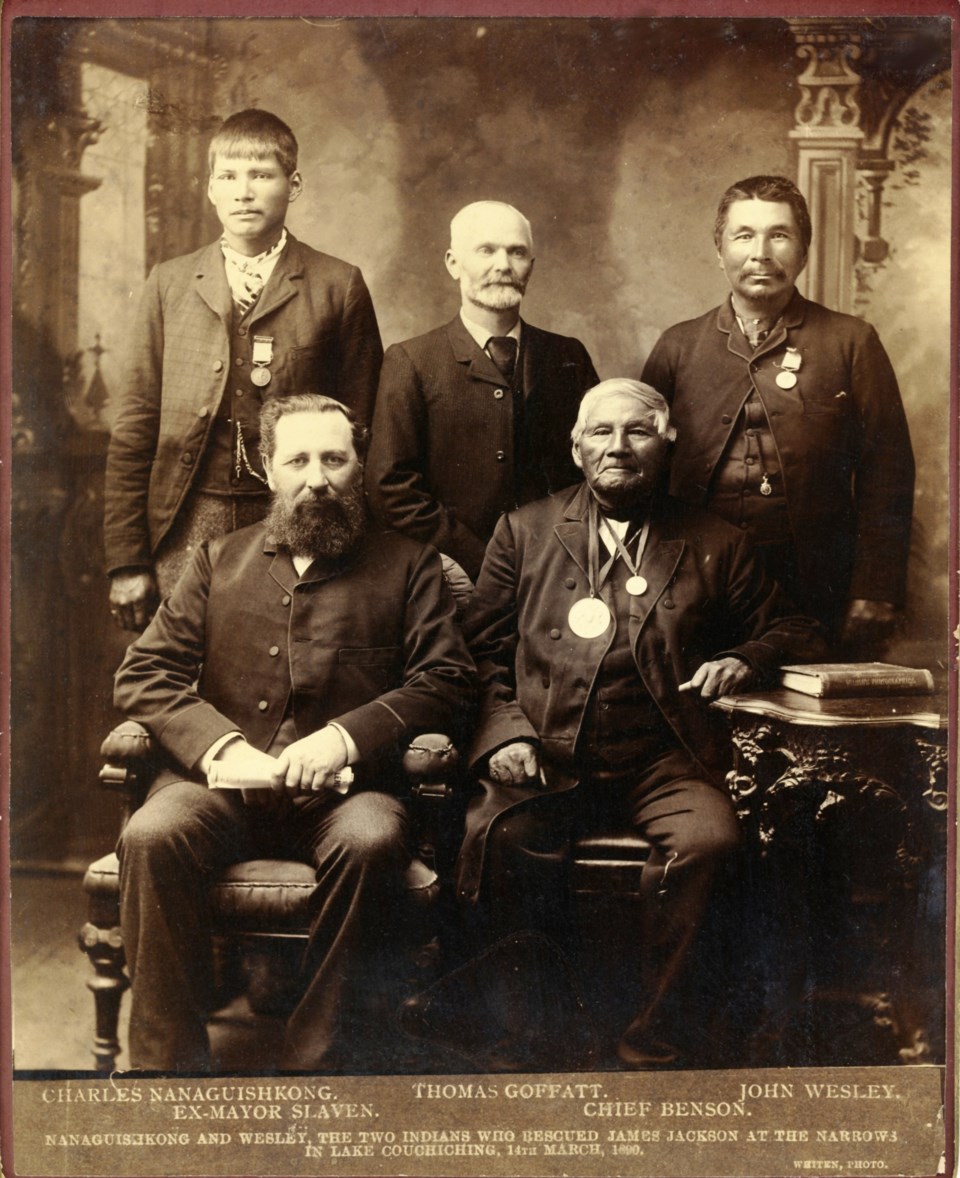Postcard Memories is a weekly series of historic postcard views and photos submitted by Marcel Rousseau. Some were previously published by the Orillia Museum of Art and History and in the book Postcard Memories Orillia.
This wonderful studio portrait by Orillia photographer George E. Whiten, dated 1890, shows Charles Nanaguishkong and John Wesley with Chief Benson, Orillia Mayor Thomas Goffatt and Ex-Mayor Slaven.
The
“Last Friday, a number were fishing at the
His cries attracted the attention of two Indians--- John Wesley and Charles Nanigishking ---- who were fishing near the Northern Railway Bridge, Mr. Jackson estimates about seven hundred yards away. They ran as close as the ice would bear, but soon found it would be impossible to reach him thus. Encouraging him to hold on, they ran to the bush, about two hundred yards off, and obtained two poles, with two boards, and by laying these over the thin ice, succeeded in getting within the length of a spear of Mr. Jackson, but the ice bent under them even there so that the water overflowed it.
Mr. Jackson directed them to spear his coat, and this was done at the shoulder, but the cloth would not hold. They then called to him to grasp the spear, which he did as he was losing consciousness. Providentially, his grip did not relax until the Indians had drawn him within reach, and they pulled him up to the firm ice. When out of the water, in which he had been at least twenty minutes, Mr. Jackson was to all appearances past human aid.
His rescuers, however, lost no time in getting him to the dwelling of Mr. Myers, where he was rolled in flannels, put to bed, and by rubbing and warm drinks he was finally restored to life. Only a strong constitution could have endured immersion in the icy cold water for such a length of time.
The bravery and perseverance of the two Indians is worthy of the highest praise, for they knew well that should the frail ice give way beneath them, all three must inevitably perish, yet they never hesitated for a moment , and it is to their cool courage and quick judgment that Mr. Jackson owes his life. We understand that Mayor Slaven will bring their brave action to the notice of the Royal Humane Society.”
Note: The 1891 census lists Mr. James Jackson as being 70 years old, a stonemason living in
